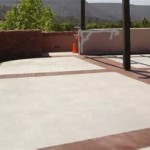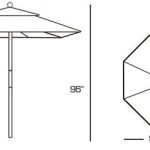The Cost of a Concrete Patio DIY Project
Building a concrete patio is a popular DIY project, offering a durable and attractive addition to any outdoor space. A concrete patio can seamlessly integrate with landscaping, provide a sturdy surface for hosting gatherings, or simply create a relaxing spot for enjoying the outdoors. However, before embarking on this project, it's crucial to understand the associated costs, as they can vary considerably depending on factors such as size, design, and material choices.
Factors Influencing Concrete Patio Cost
The cost of a DIY concrete patio project is influenced by several factors, each contributing to the overall budget. These key factors include:
1. Size and Shape
The size of the patio is a major cost driver. Larger patios require more concrete, rebar, and labor, resulting in higher overall expenses. The shape of the patio also plays a role, with intricate designs potentially increasing the complexity of the project and the need for specialized labor. A simple rectangular patio will generally be more cost-effective than a complex curved or L-shaped design.
2. Concrete Type and Thickness
Concrete comes in different types and grades, each affecting the cost. Standard concrete is the most common and affordable choice, suitable for most residential patios. However, for increased durability and resistance to cracking, consider using a higher-strength concrete mix. The thickness of the concrete slab is another factor, with thicker slabs providing greater structural integrity but requiring more material. A typical patio slab is 4 inches thick.
3. Labor Costs
While a DIY project aims to reduce labor costs, there might be instances where professional assistance is required, particularly for tasks like pouring concrete or operating heavy machinery. This labor cost can significantly impact the overall budget. It's essential to consider the extent of your DIY capabilities and the availability of skilled labor for specific tasks.
4. Materials and Supplies
Beyond concrete, several materials and supplies are needed for a concrete patio project. These include:
- Rebar: Reinforcing bars provide structural support and prevent cracking.
- Forms: These create the shape and boundaries of the patio.
- Gravel: Used for drainage and base preparation.
- Sand: Used for leveling and creating a stable foundation.
- Concrete sealer: Protects the concrete from stains and weathering.
- Tools: Includes shovels, wheelbarrows, trowels, and other essential tools for mixing and pouring concrete.
Estimating Concrete Patio Cost
A realistic cost estimate for a DIY concrete patio project is essential for planning and budgeting. Several factors influence the final cost, making accurate estimations challenging. However, a rough idea can be gained by considering the following:
1. Concrete Cost
Concrete cost is typically calculated per cubic yard. The price varies depending on the grade and location. A general estimate is $100 to $150 per cubic yard. To determine the required concrete volume, multiply the patio’s square footage by the desired slab thickness (usually 4 inches). For example, a 100 square foot patio with a 4-inch thick slab would need approximately 3.7 cubic yards of concrete.
2. Material Costs
The cost of materials such as rebar, forms, gravel, sand, and tools varies depending on the project's scale and the materials chosen. A rough estimate for these materials can range from $50 to $100 per square foot of patio area. You can research local suppliers to obtain accurate pricing for your specific requirements.
Key Considerations
While a DIY concrete patio project can save on labor costs, there are several key considerations to ensure success:
1. Site Preparation
Proper site preparation is crucial for a durable and level patio. This involves removing existing vegetation, creating a level base, and ensuring adequate drainage. Failing to properly prepare the site can lead to problems with settling and cracking.
2. Concrete Mixing and Pouring
Successfully mixing and pouring concrete requires experience and knowledge. Ensure you have the necessary tools and understand the process before attempting it. Incorrect mixing or pouring can result in uneven surfaces, cracking, and other issues.
3. Curing and Maintenance
After pouring, concrete needs time to cure properly. This involves protecting it from direct sunlight, rain, and extreme temperatures. Once cured, regular maintenance, such as sealing and cleaning, helps protect the concrete and extends its lifespan.

How Much Does A Patio Cost In 2024 Forbes Home

2024 Concrete Patio Cost Average To Pour A Angi

Guide How Much Does A Concrete Patio Cost

Guide How Much Does A Concrete Patio Cost

Resurfacing A Concrete Patio For Budget Diy Makeover Fab Everyday

Concrete Patio Cost Factors Influencing The Of

How Much Does It Cost To Build A Patio In 2024 Forbes Home

How Much Does A Concrete Patio Cost 2024 S

How Much Does A Concrete Patio Cost 2024 S

How Much Money Did I Save Pouring A Concrete Slab Myself Time Quality Comparison








